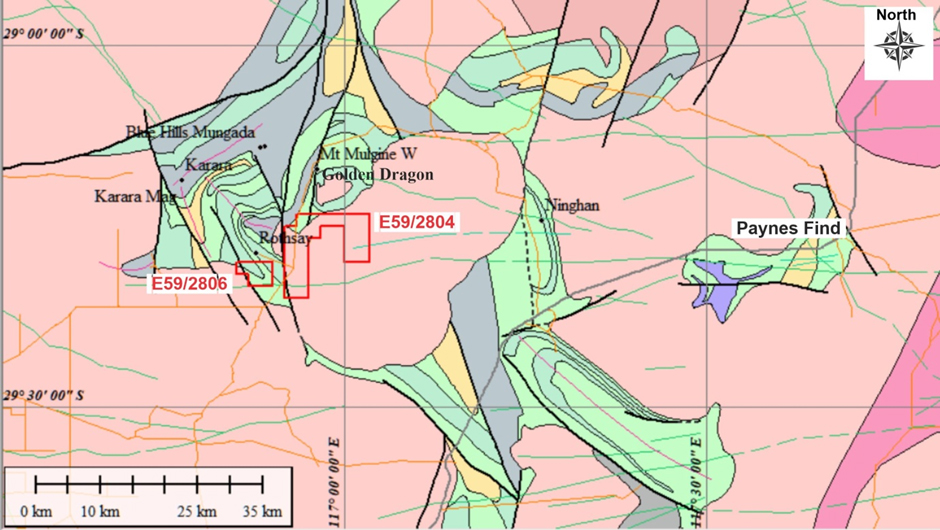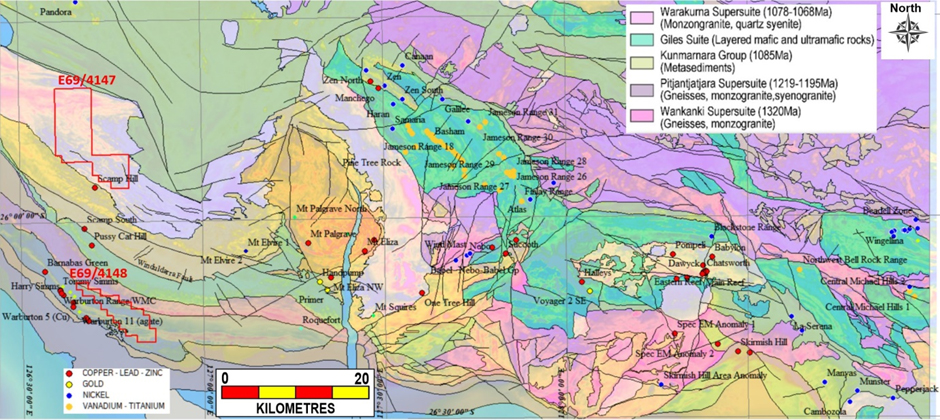Other projects
Blue Hill Project
E59/2804 and E59/2806 located approximately 60 km west of Paynes Find. The tenements cover approximately 75 km2 and 15 km2 respectively of the Warriedar Fold Belt greenstones and granitic rocks that are highly prospective for lithium and REE bearing pegmatites, gold, and base metals.
The regional Geological Survey of WA (GSWA) mapping of the area covered by E59/2804 shows that it is mostly covered by eluvial and alluvial sands and silts with some scattered small outcrops of bedrock. The GSWA interpretation of the tenement area is that almost all the tenement overlies Yilgarn Craton granites but during the Zeus field trip it was noted that much of the surficial lag float along the north of the tenement was actually metasediments. Several subcrops of pegmatite were also located in the northwest corner of the tenement, one of which included beryl, indicating that the tenement is very prospective for pegmatite hosted lithium and rare earth element (REE) minerals. If the north of the tenement is actually metasediments, not granites, this prospectivity is significantly further enhanced.

Musgrave Project
E69/4147 and E69/4148 located approximately 1,000 km northwest of Kalgoorlie and 1,600 km northwest from Perth in the Musgrave region of Western Australia. The tenements cover approximately 281 km2 and 120 km2 respectively of the West Musgrave greenstones and granitic rocks that are highly prospective for nickel, gold, REEs and base metals.
The Musgrave Province orogenic belt lies at the junction of three stable crustal landmasses or cratons (North Australian, West Australian and South Australian cratons) that collided during an active period of plate tectonics in the Proterozoic. During this tectonically active period, magma from the upper mantle intruded the belt forming numerous massive mafic and ultramafic intrusions and volcanics.
The Musgrave Province contains one of the greatest concentrations of mafic–ultramafic layered intrusions globally, among them Mantamaru is one of the world’s largest layered intrusions, as well as several eroded remnants of super volcanoes.

